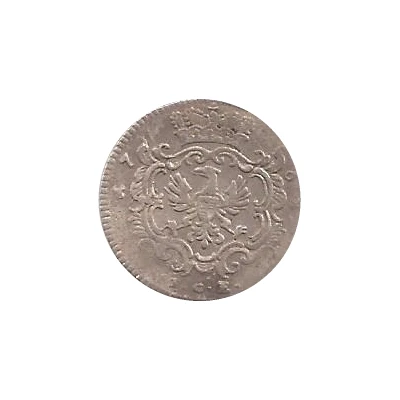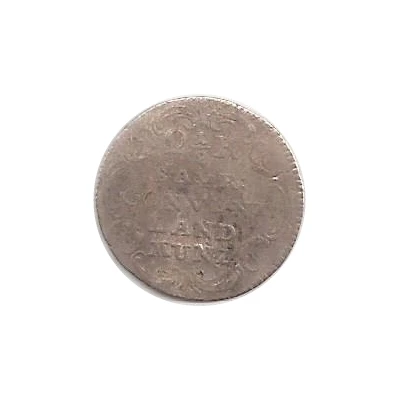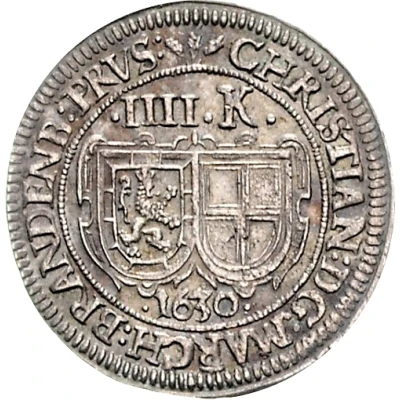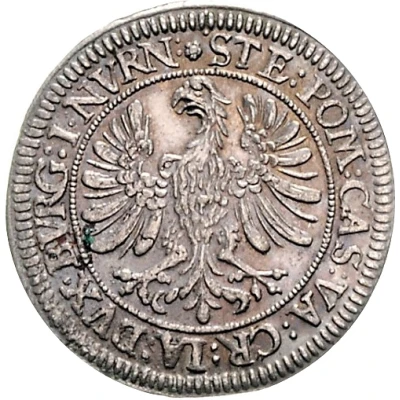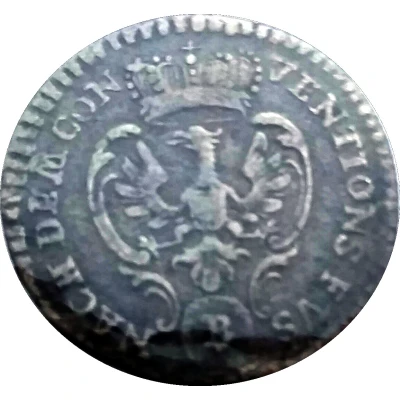
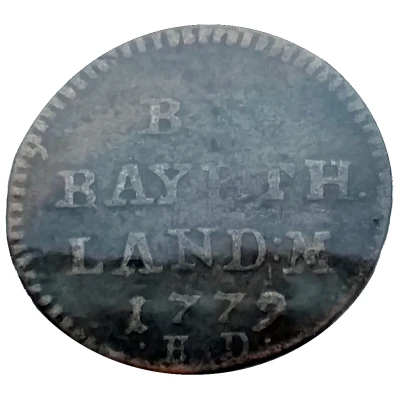

2½ Kreuzer - Christian Frederick Charles Alexander
| Billon | - | 18 mm |
| Issuer | Margraviate of Brandenburg-Bayreuth (German States) |
|---|---|
| Margrave | Charles Alexander (Karl Alexander) (1769-1791) |
| Type | Standard circulation coin |
| Years | 1779-1786 |
| Value | 2½ Kreuzer (1⁄48) |
| Currency | Thaler |
| Composition | Billon |
| Diameter | 18 mm |
| Shape | Round |
| Orientation | Medal alignment ↑↑ |
| Demonetized | Yes |
| Updated | 2024-10-05 |
| Numista | N#84215 |
|---|---|
| Rarity index | 90% |
Reverse
5-line inscription with date and mintmasters initials below.
Script: Latin
Lettering:
BR:
BAYRTH
LAND:M
1779
• E • D •
Comment
In 1780, Charles Alexander founded his own bank, the Hochfürstlich-Brandenburg-Anspach-Bayreuthische Hofbanco, out of which later came the Bayerische Hypotheken- und Wechselbank ("Bavarian Mortgage and Change Bank", today absorbed into the HypoVereinsbank). He evidently wanted to avoid supporting the Jewish banking houses that were then overseeing his financial affairs, and to keep as much of his revenue as possible in his own hands by setting himself up as a private banker.One of Charles Alexander's enterprises earned income from hiring auxiliary troops to George III of Great Britain for the Colonies in America. He had nominal command over the "Frankish Army" of 1,644 mercenaries, of whom apparently only 1,183 returned to their homeland in 1783. https://en.wikipedia.org/wiki/Charles_Alexander,_Margrave_of_Brandenburg-Ansbach#Life
Interesting fact
One interesting fact about the 2½ Kreuzer coin from the Margraviate of Brandenburg-Bayreuth is that it was made of Billon, which is an alloy of copper and silver. This was a common practice in the German States during the 18th century, as it allowed for the production of coins with a lower silver content, making them more affordable to produce and circulate. Despite being made of a less valuable material, the coin still features a detailed design, including an image of Christian Frederick Charles Alexander, the Margrave of Brandenburg-Bayreuth, on one side, and the coat of arms of the Margraviate on the other. This coin is a unique piece of history that provides insight into the economic and political climate of the time.
